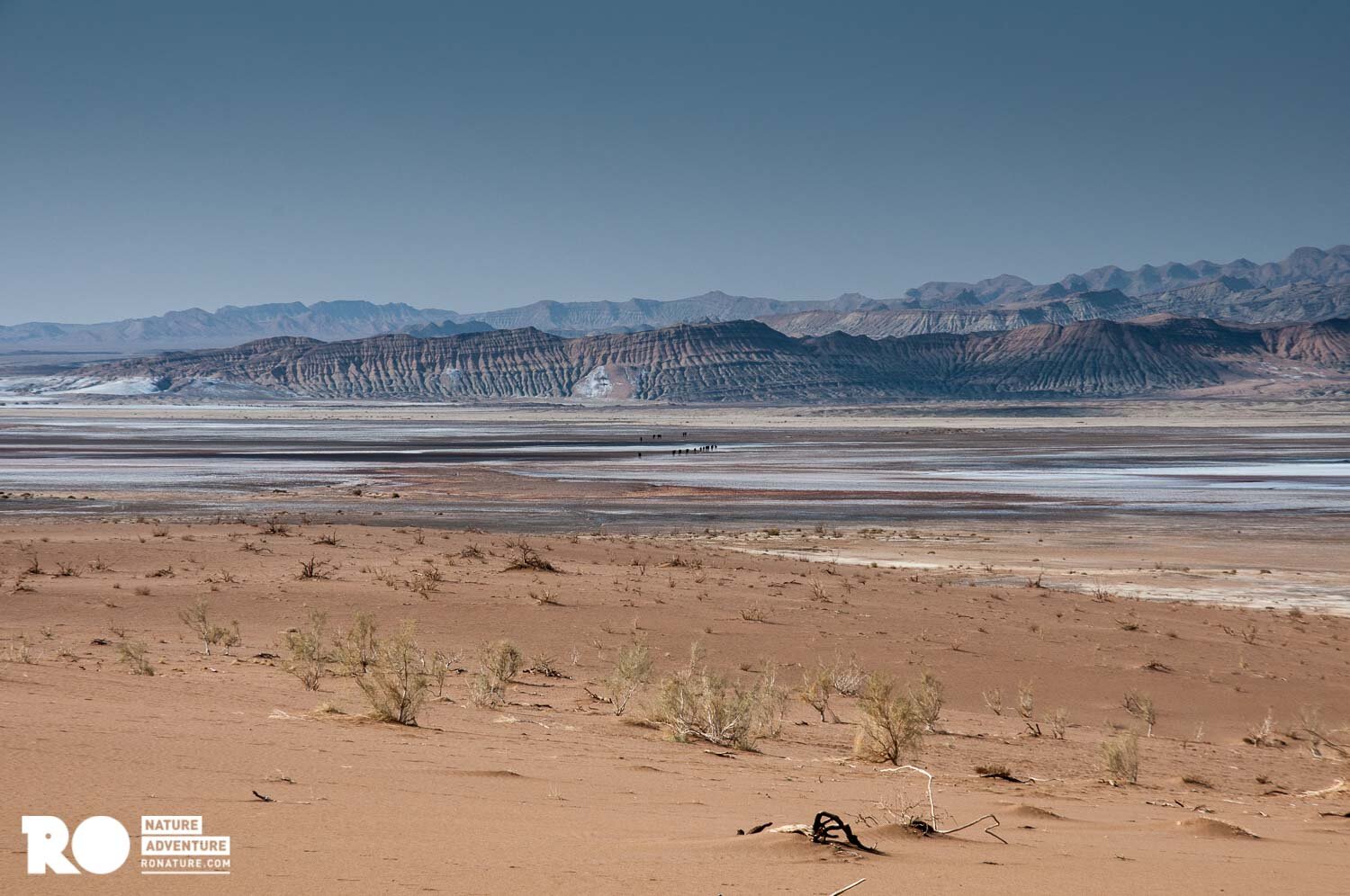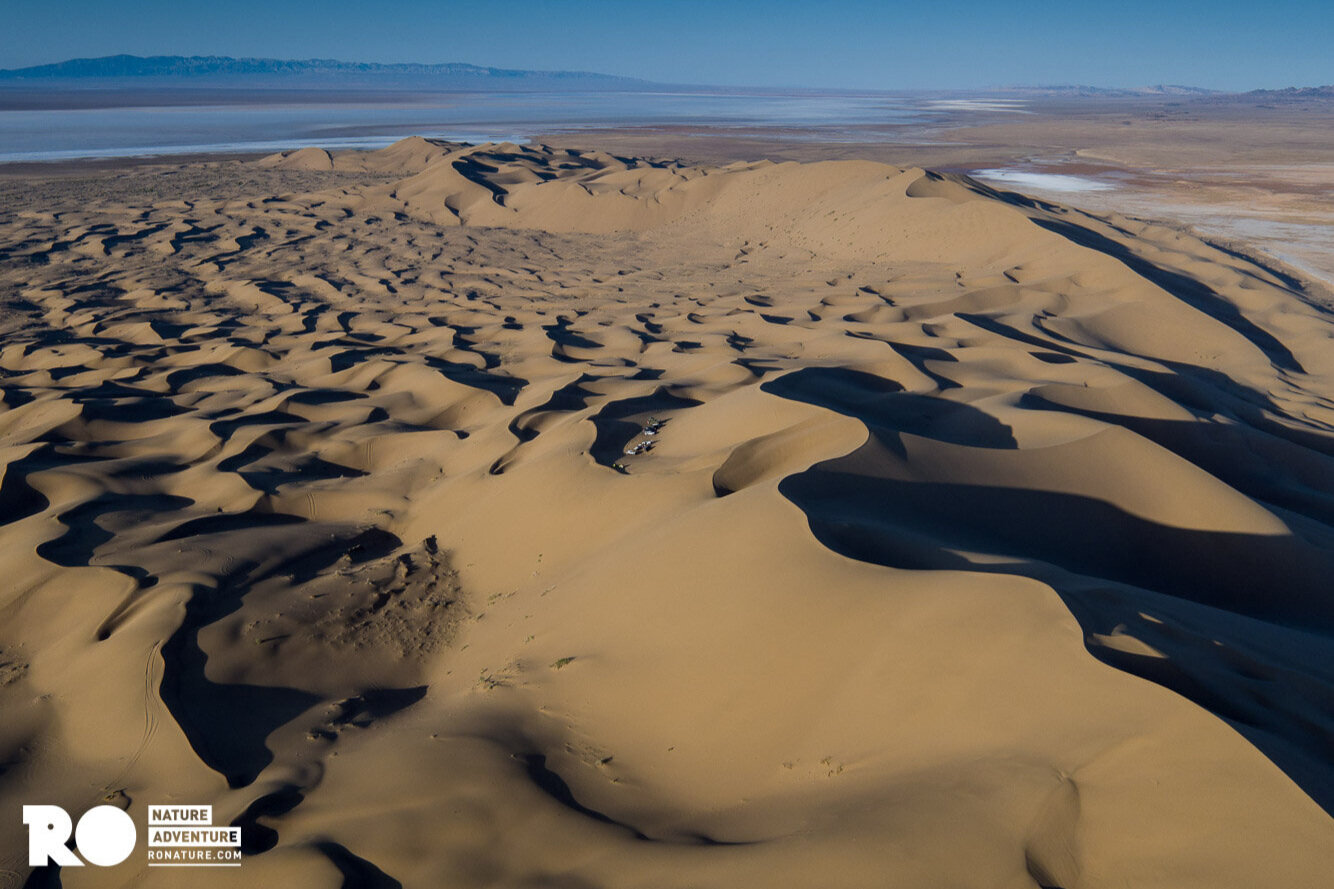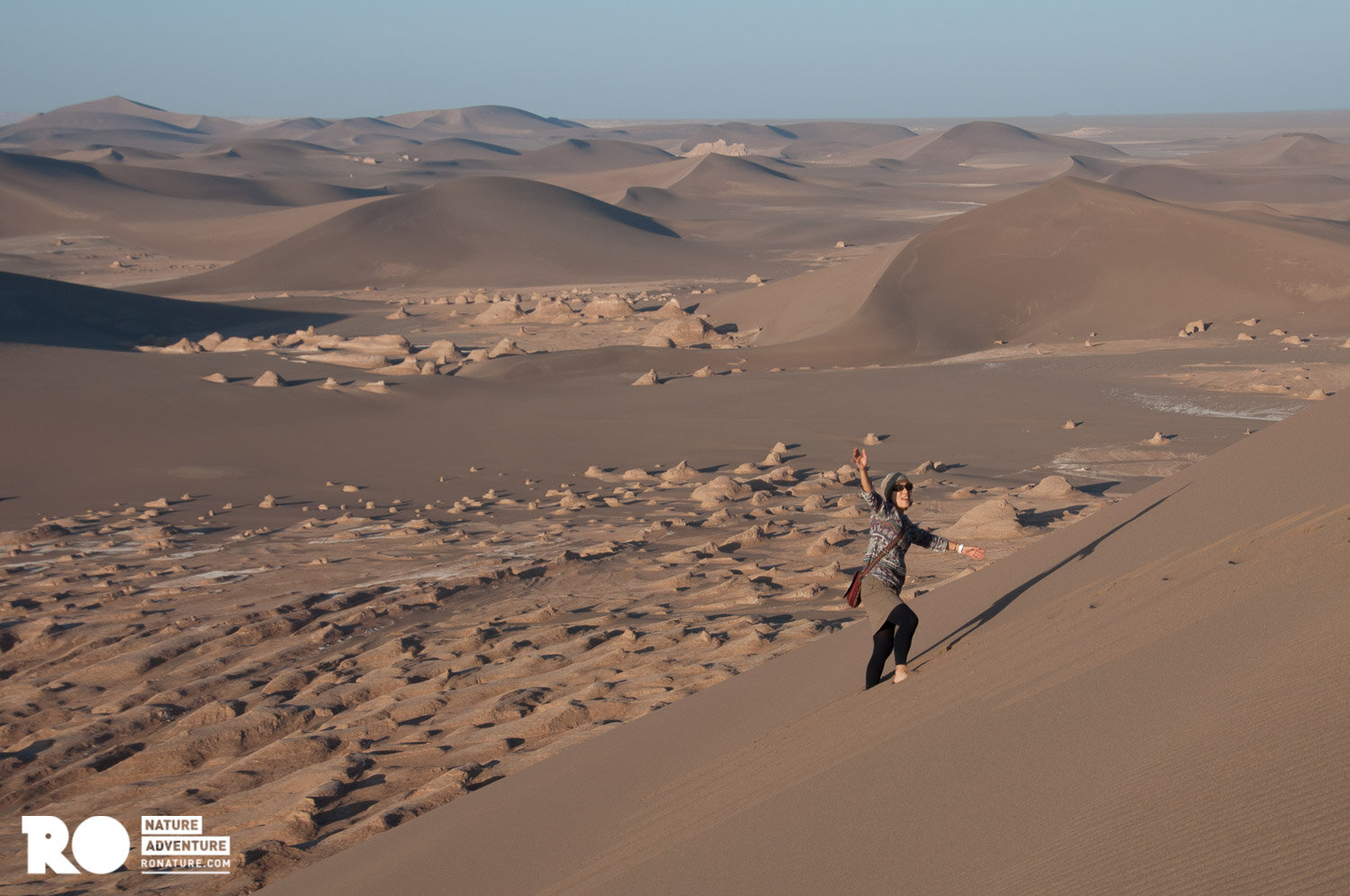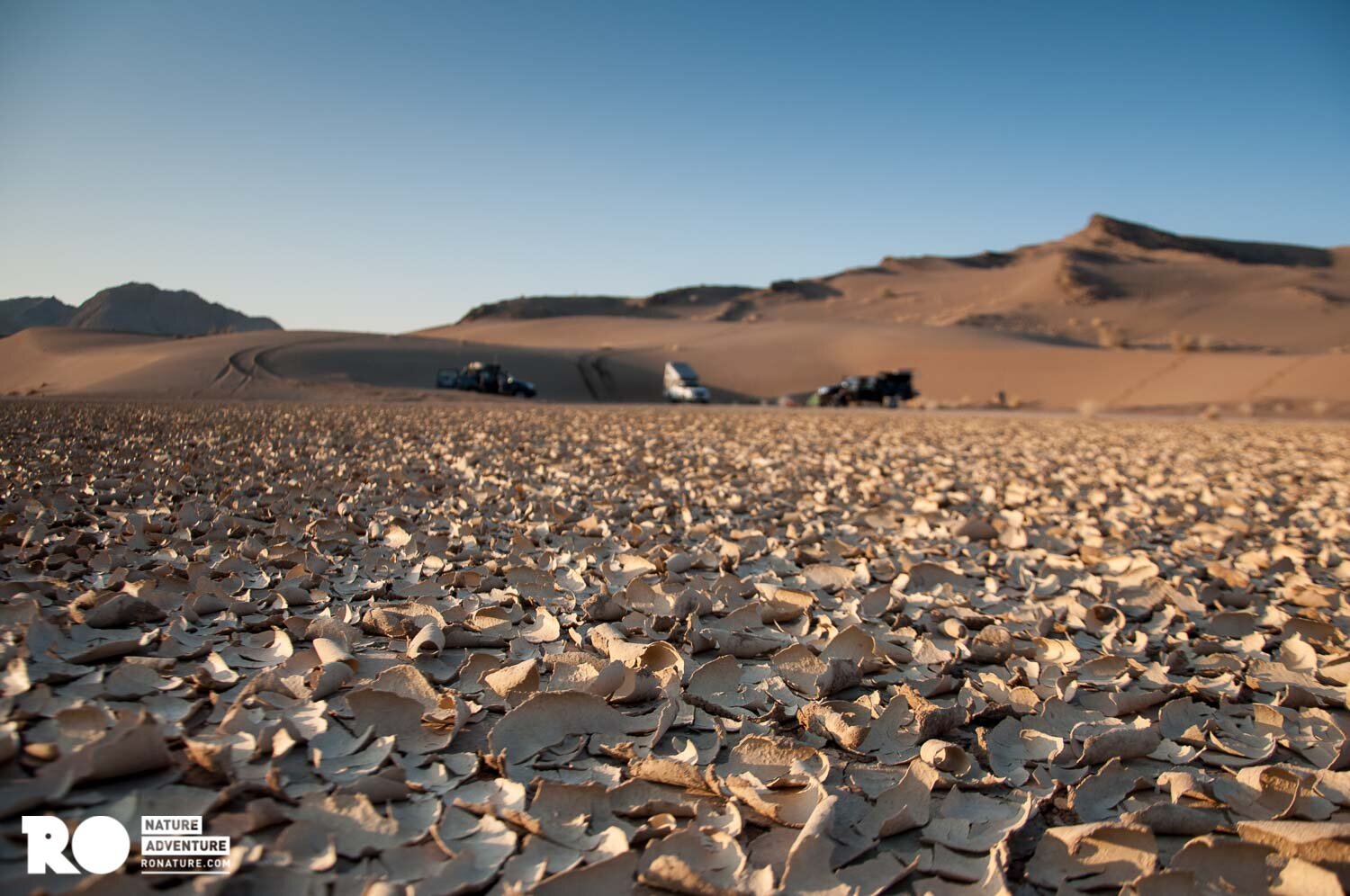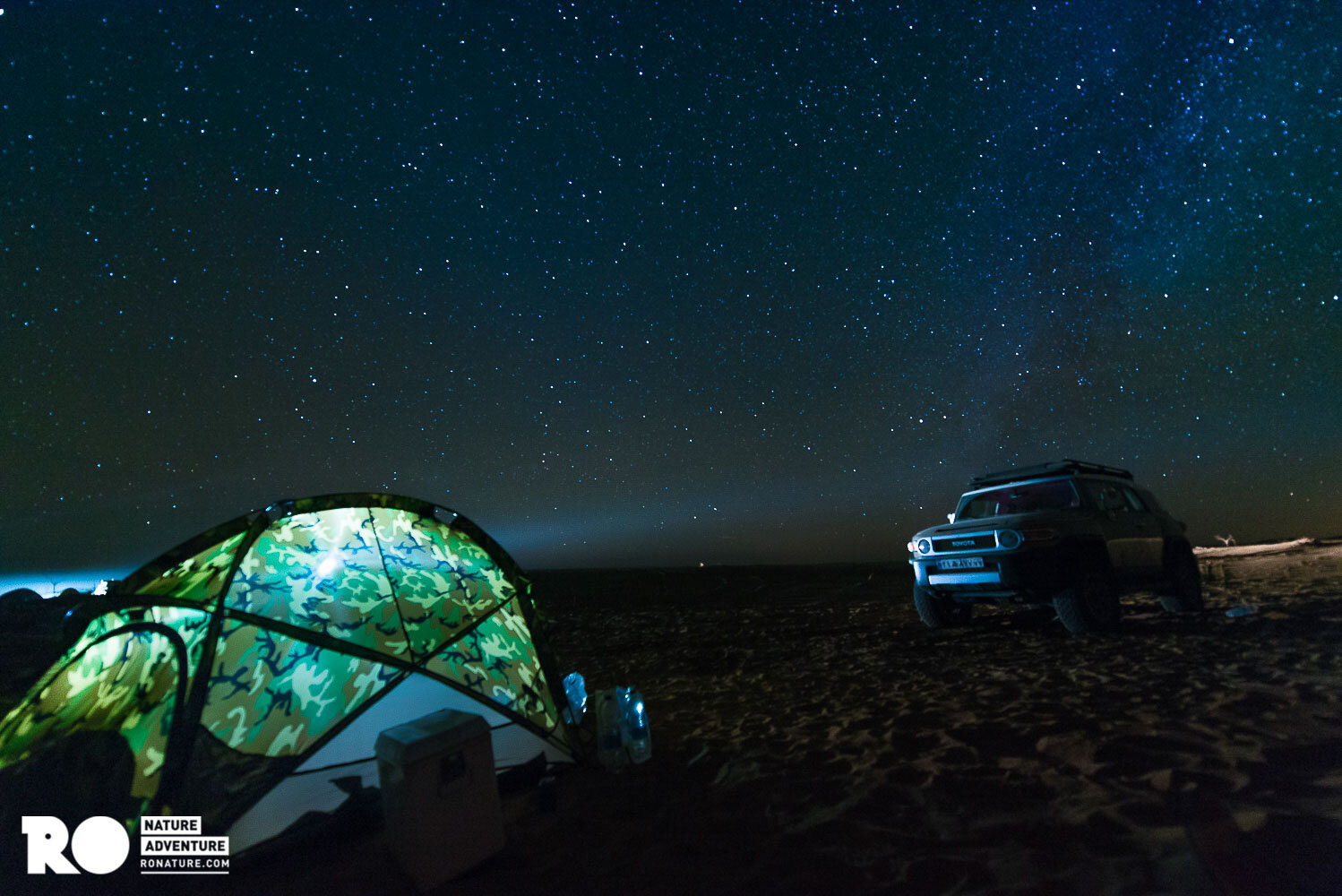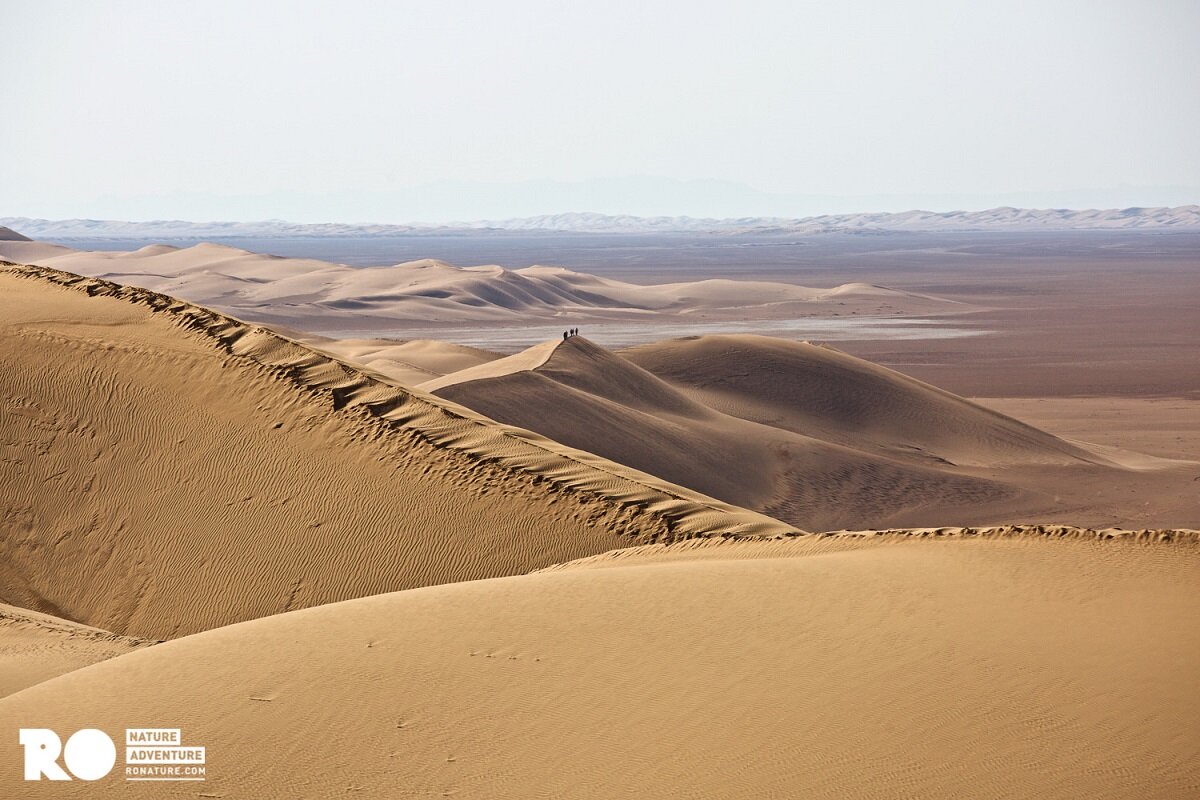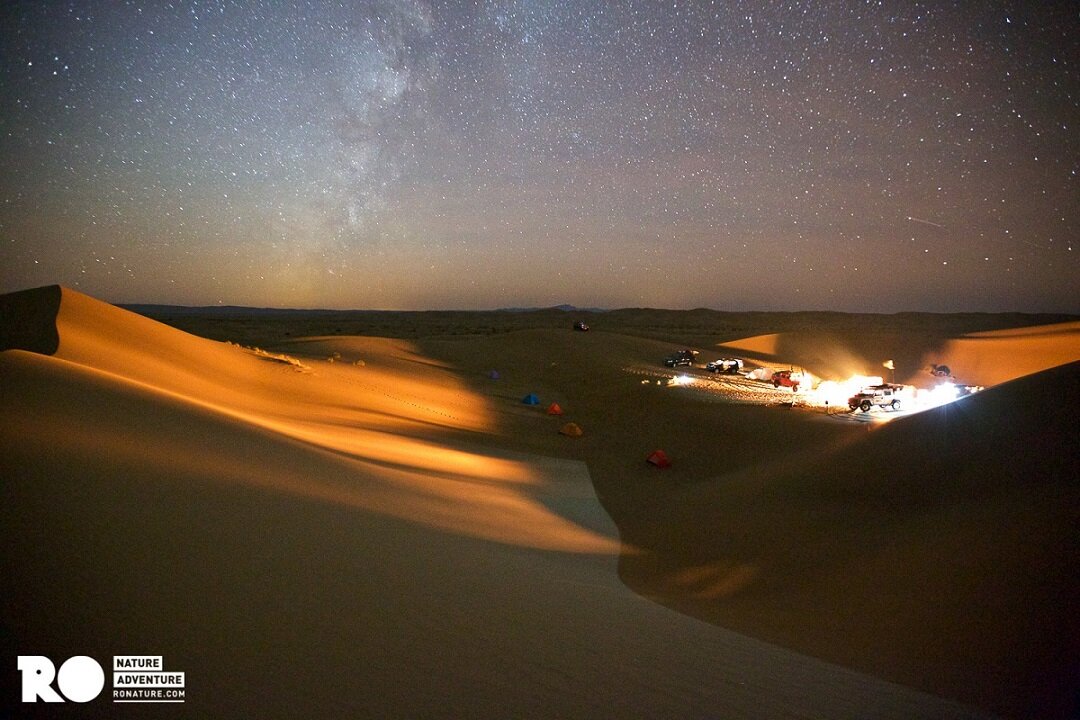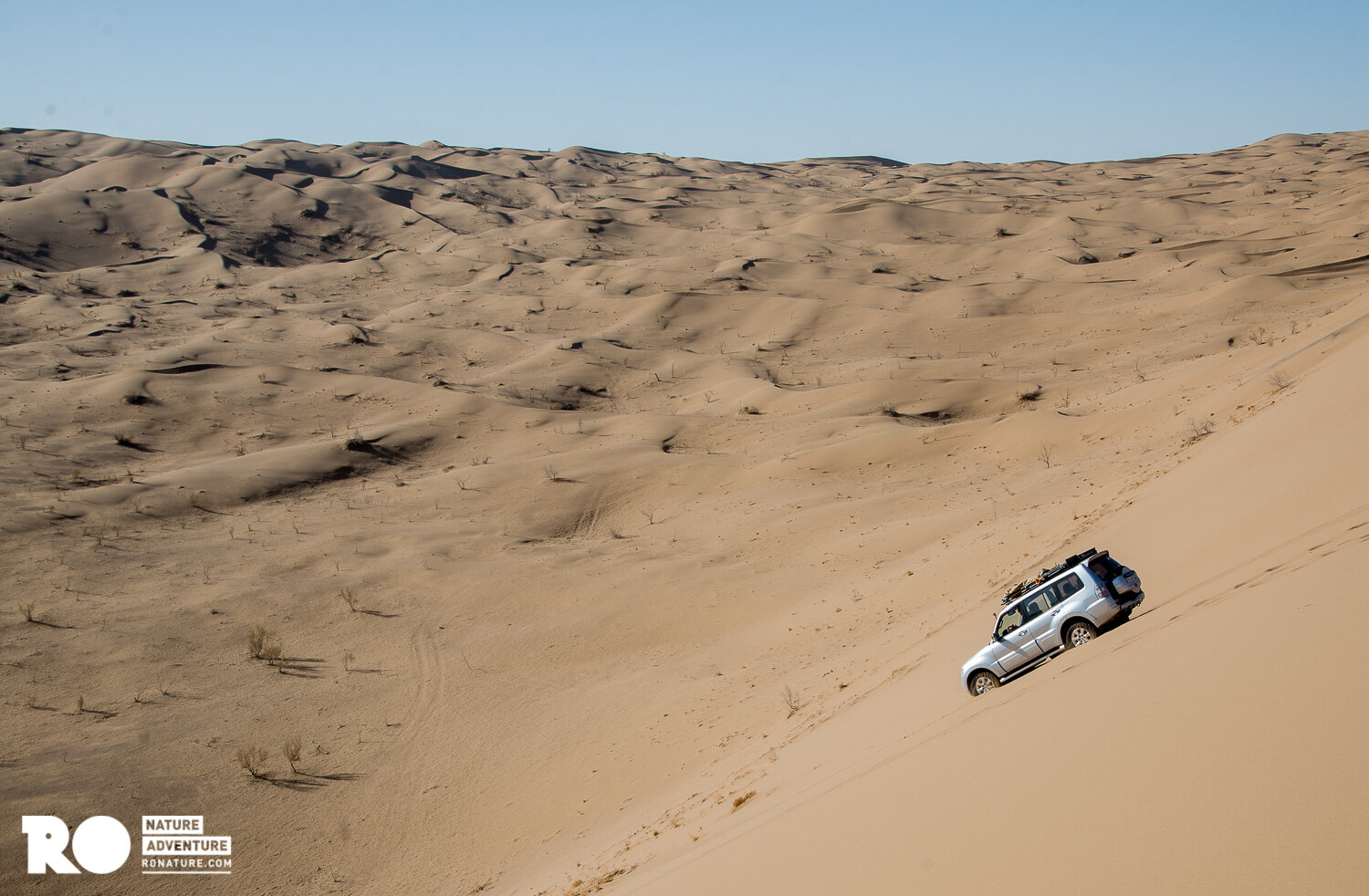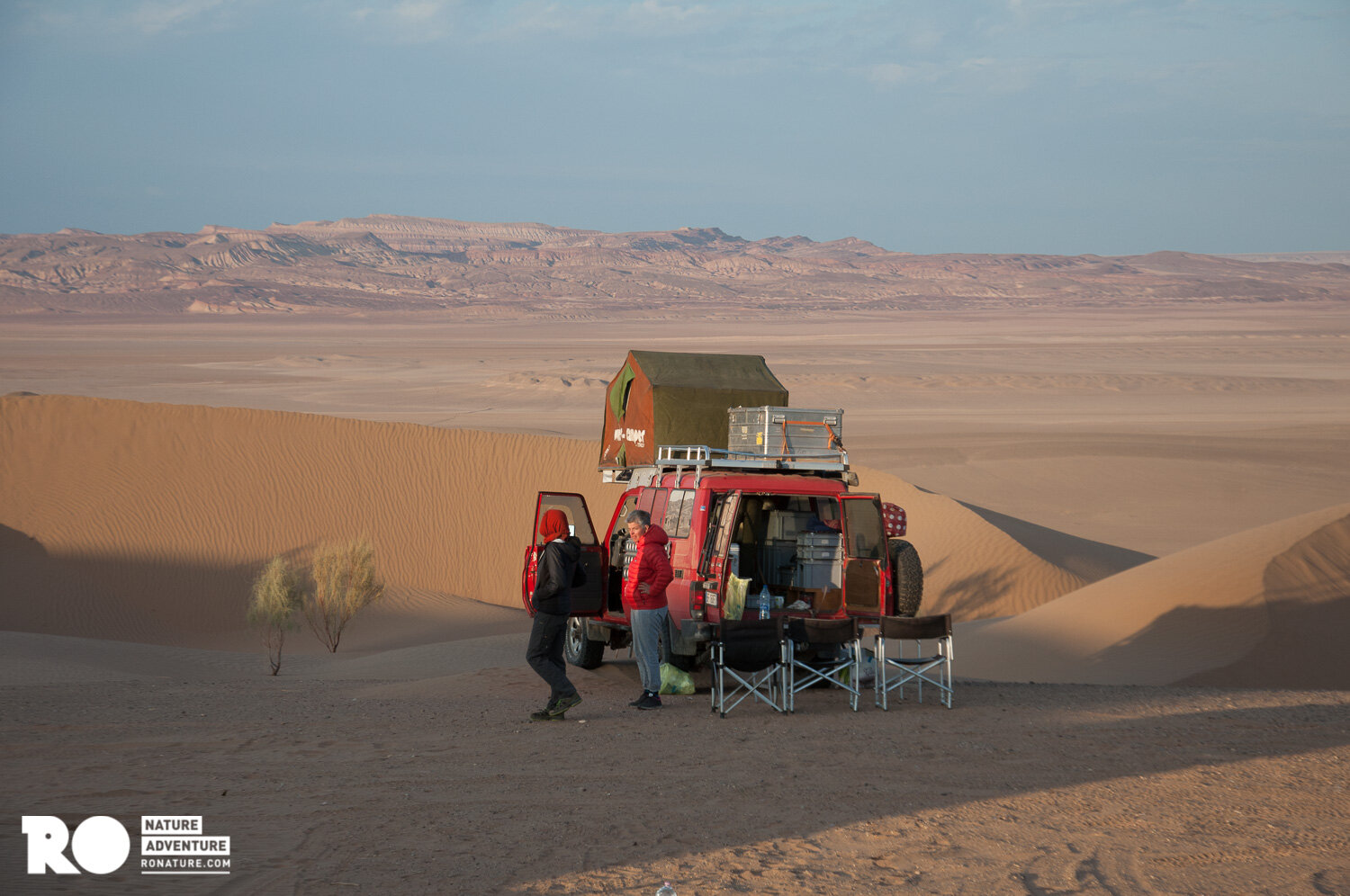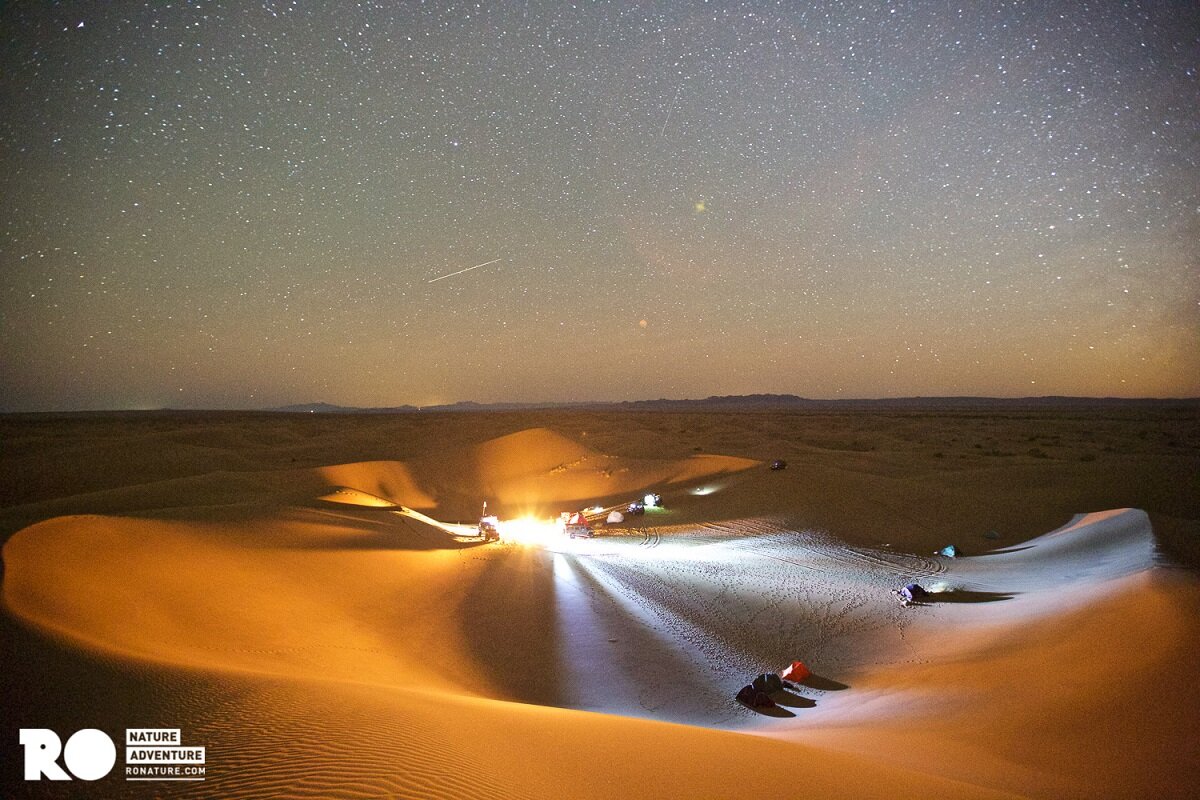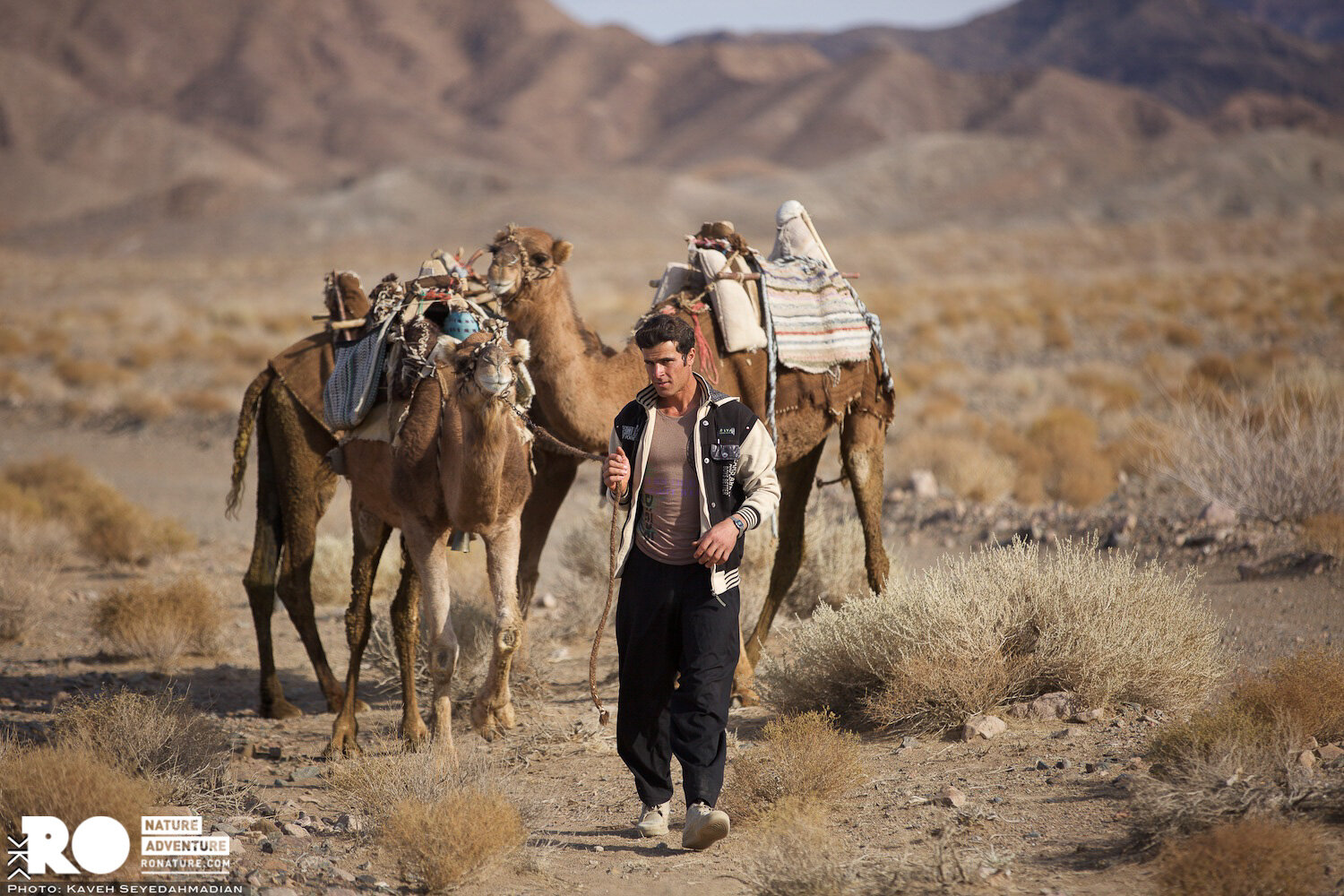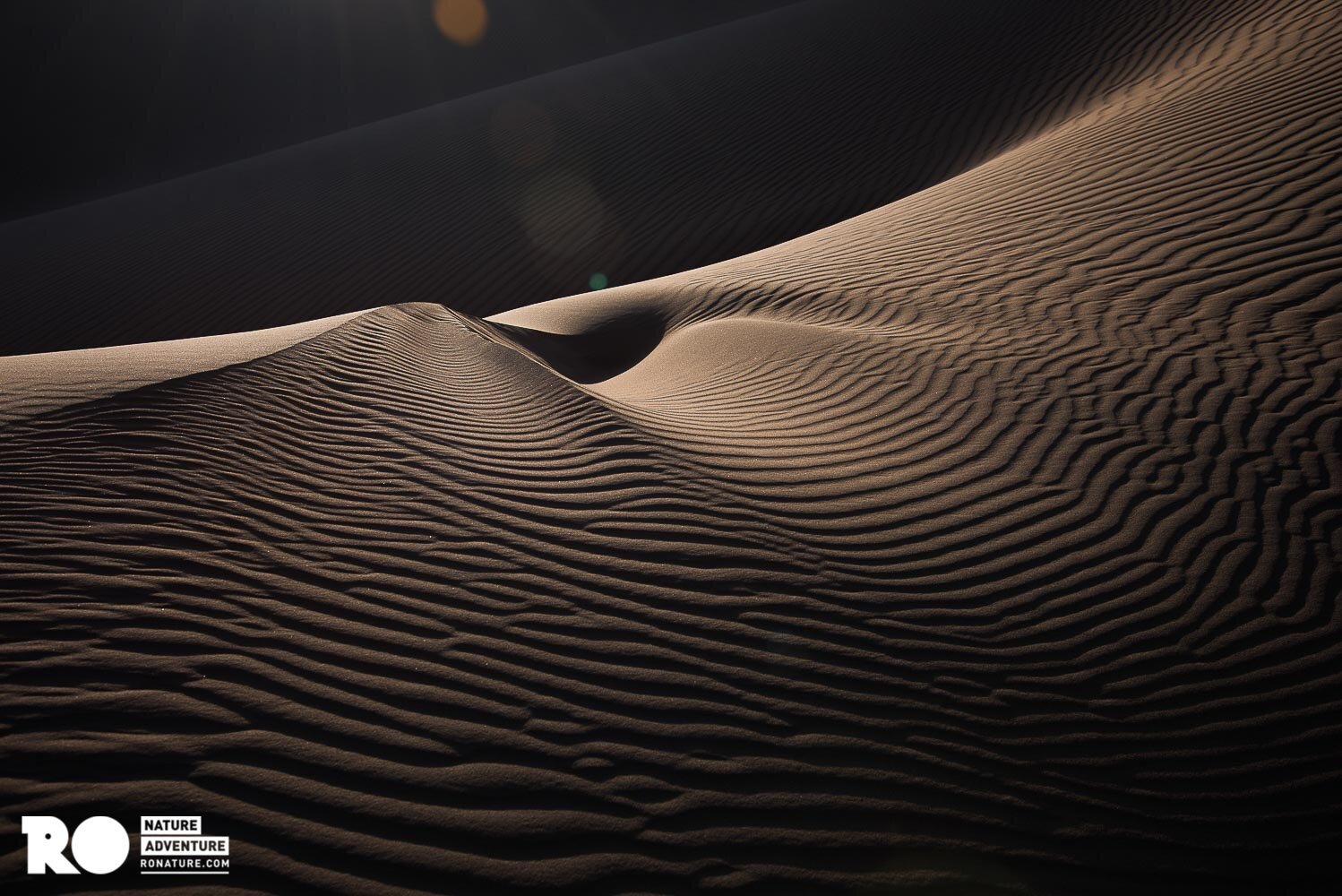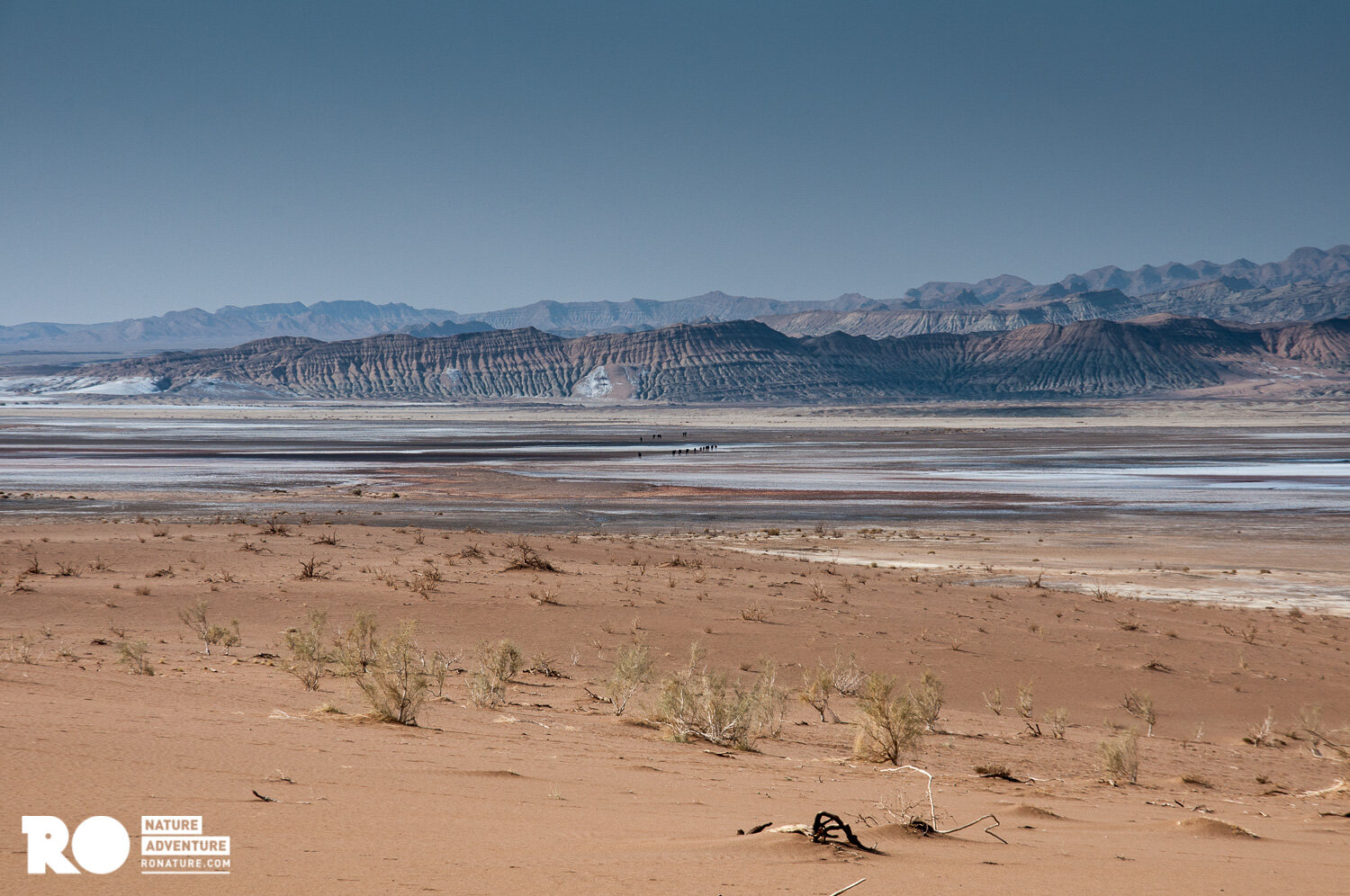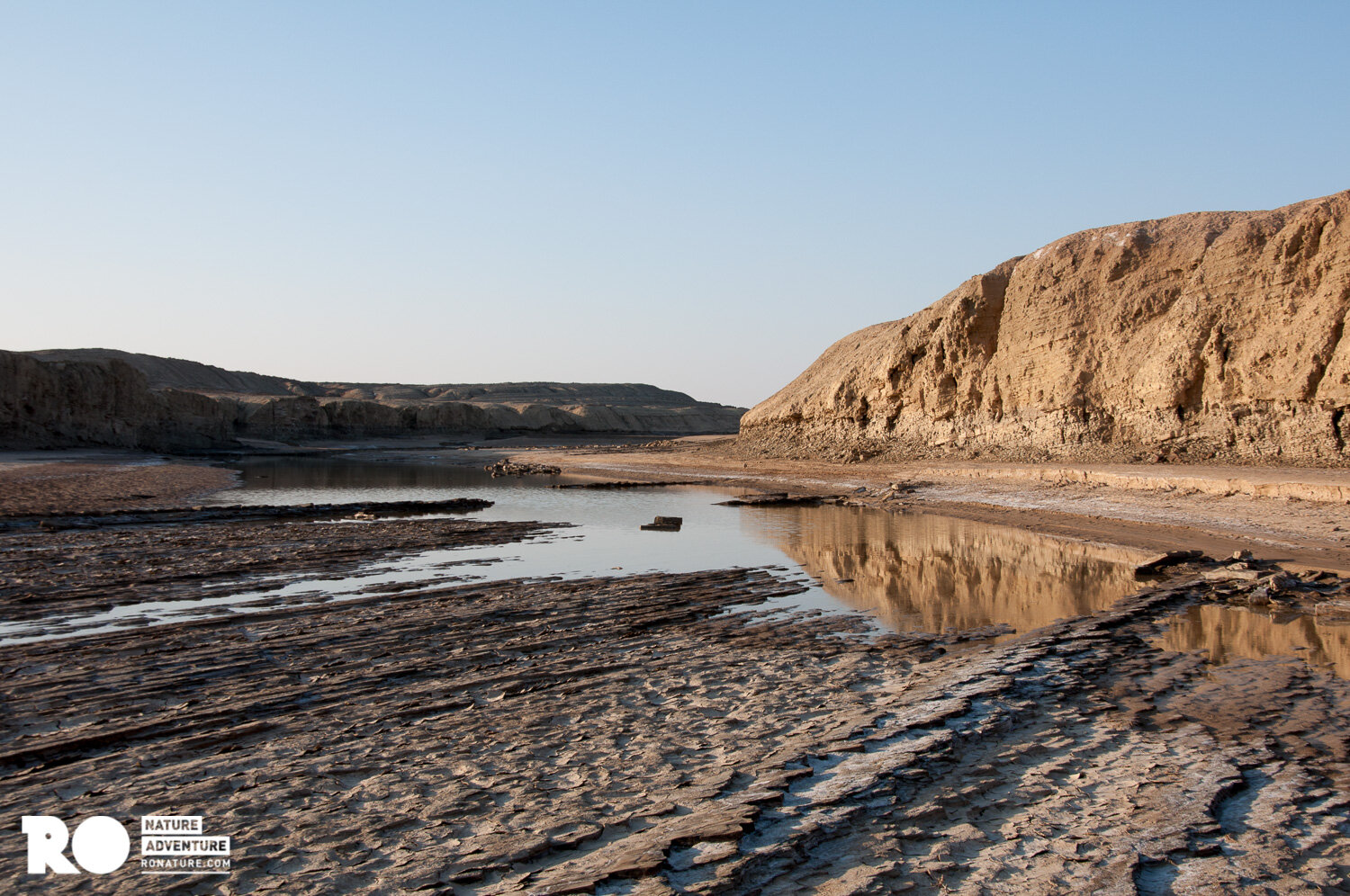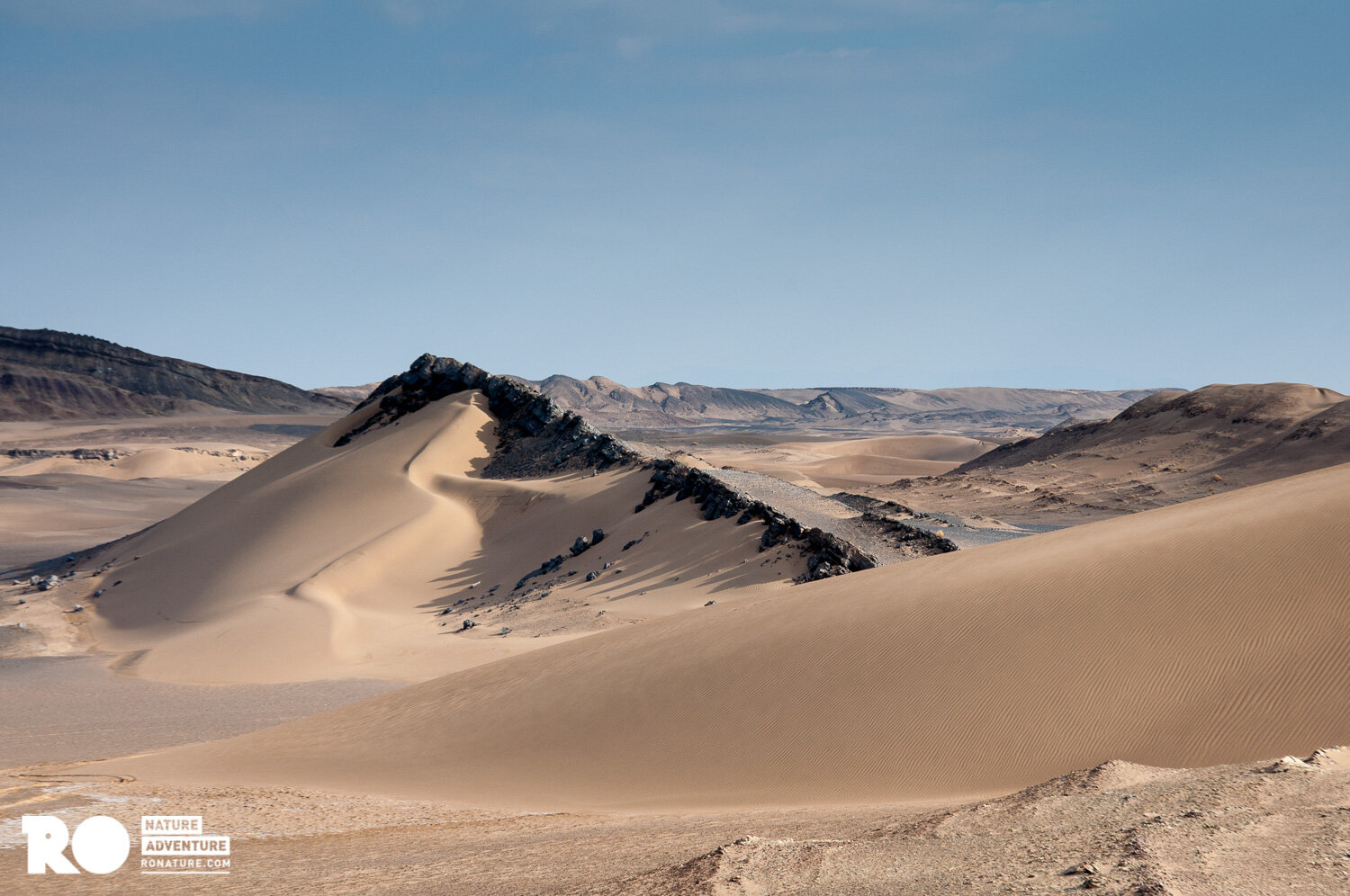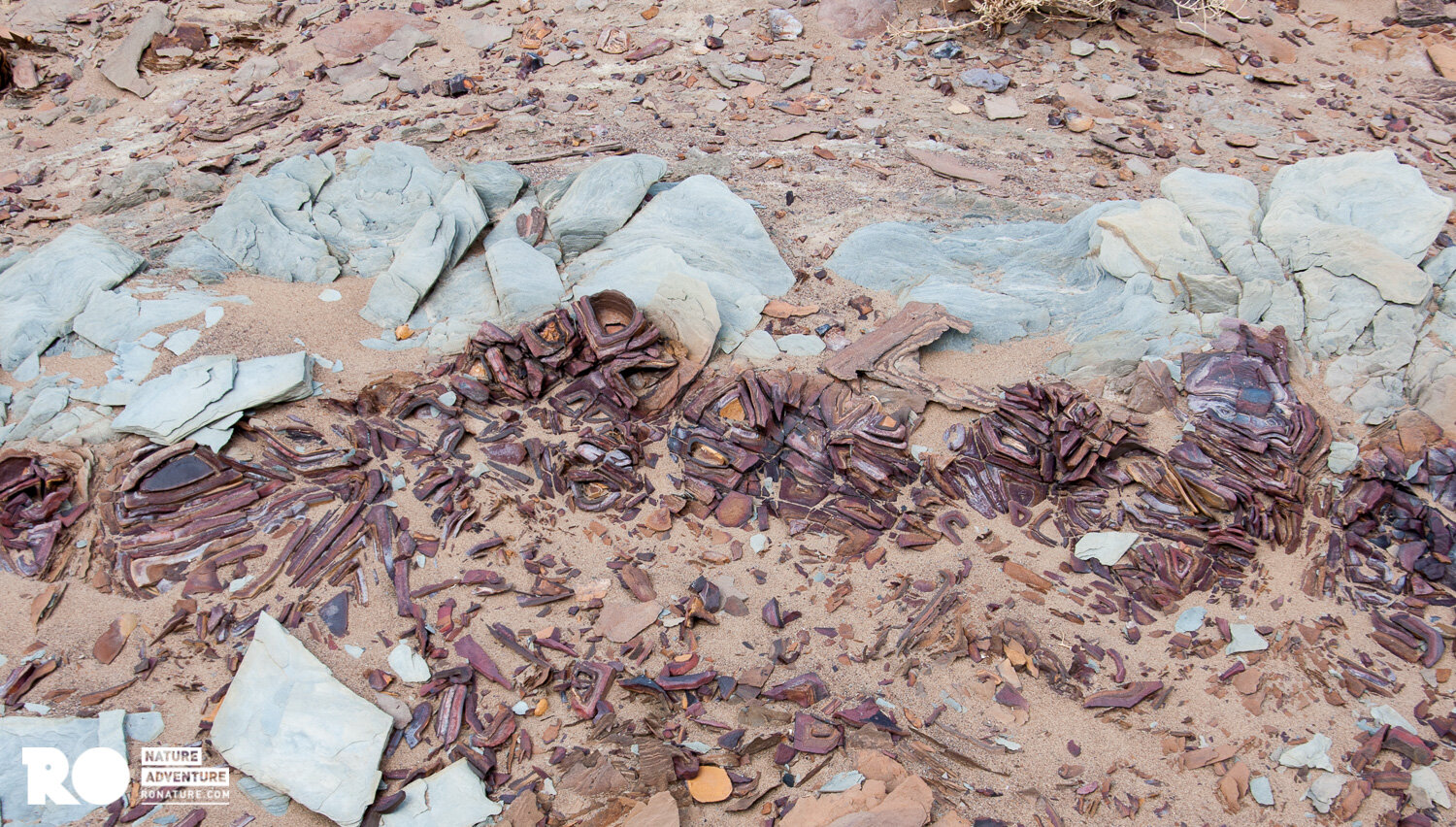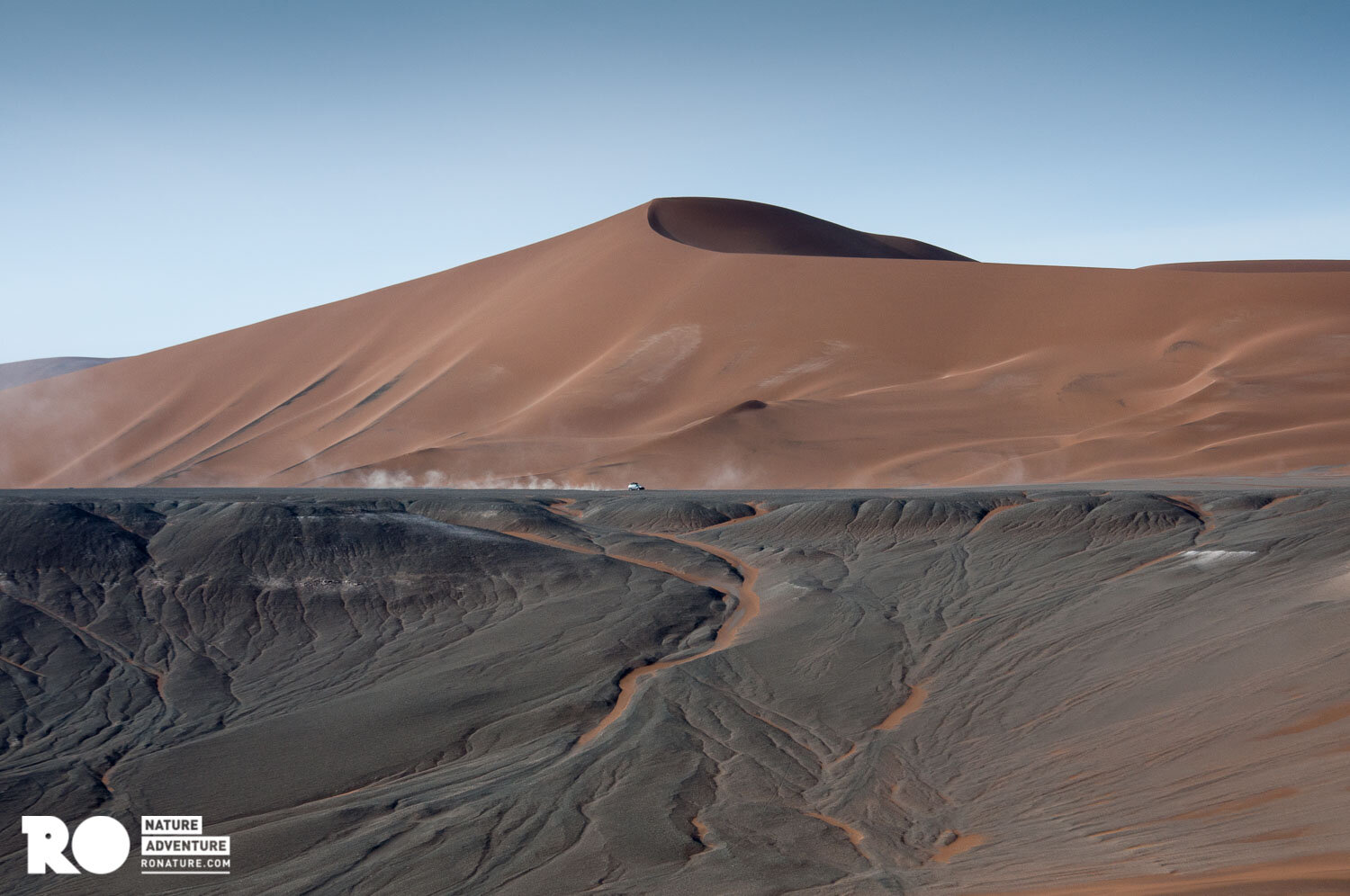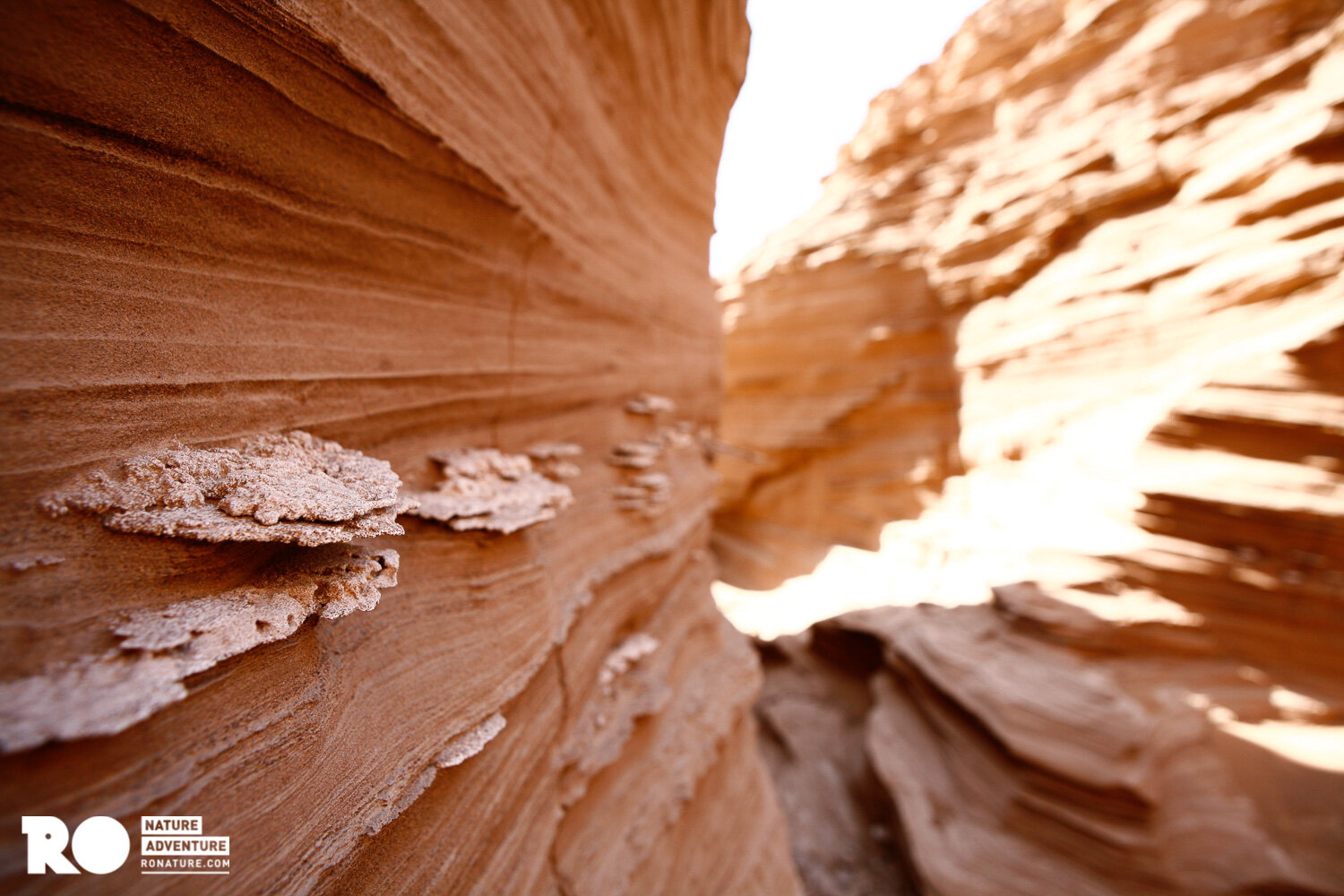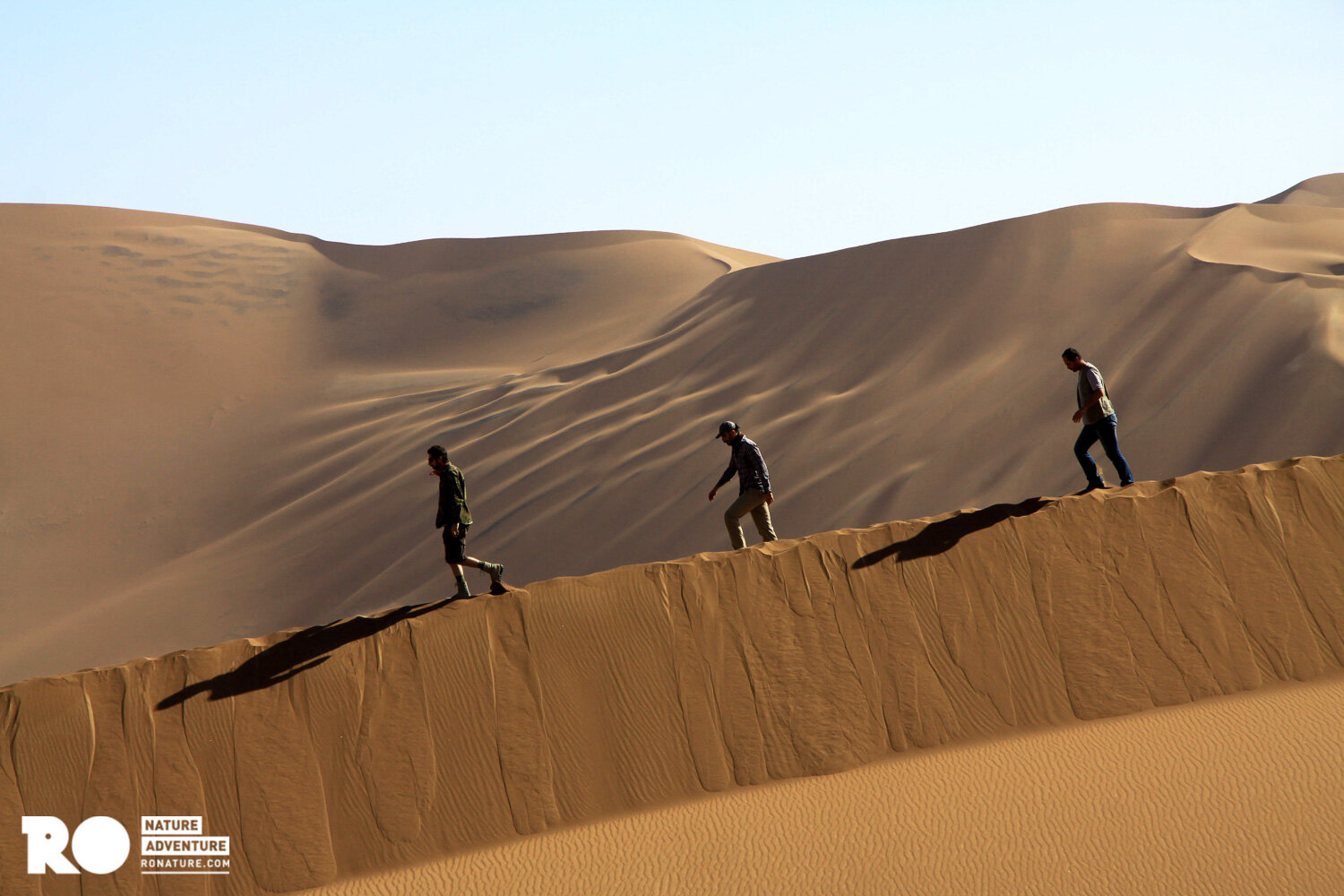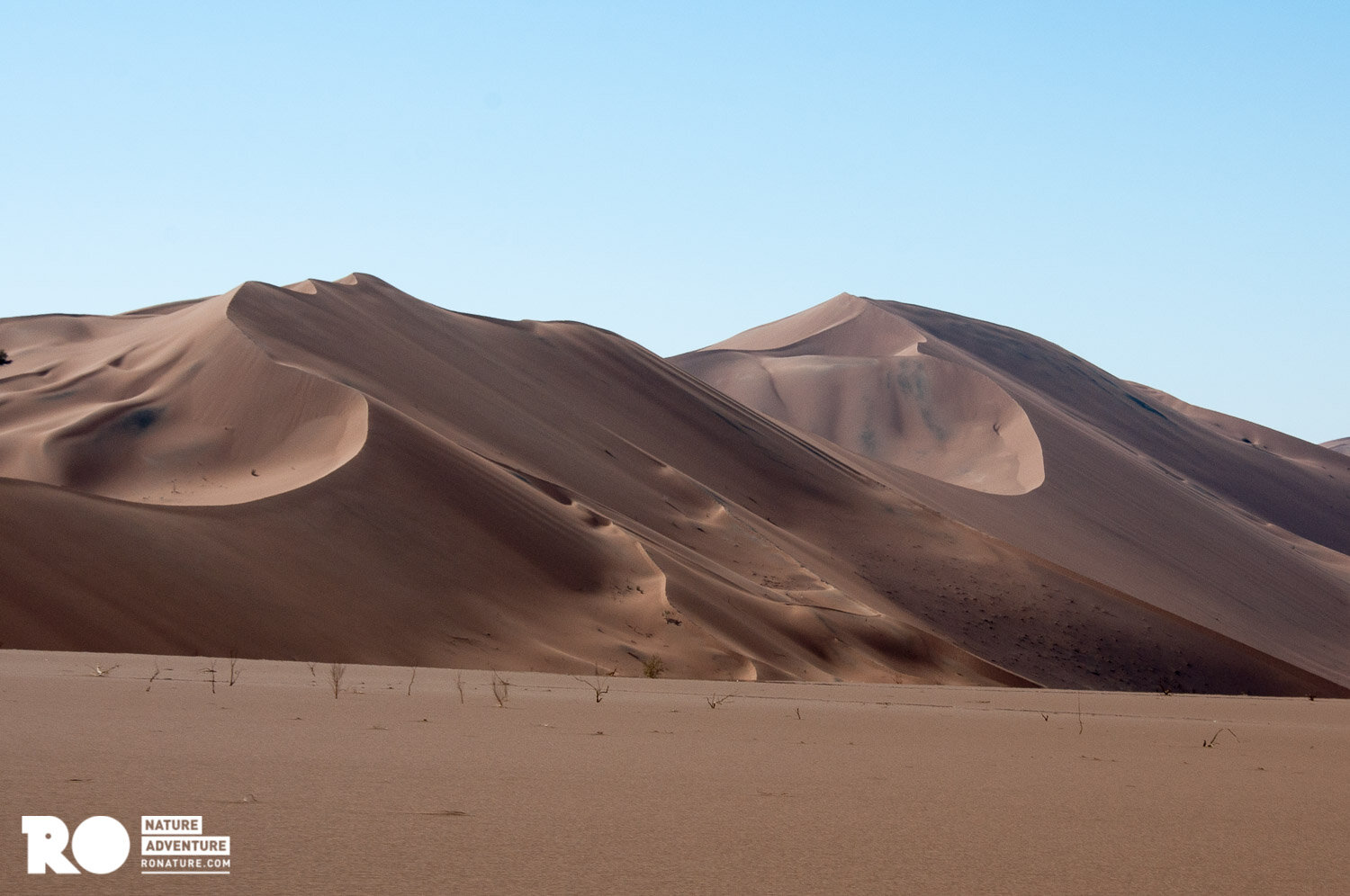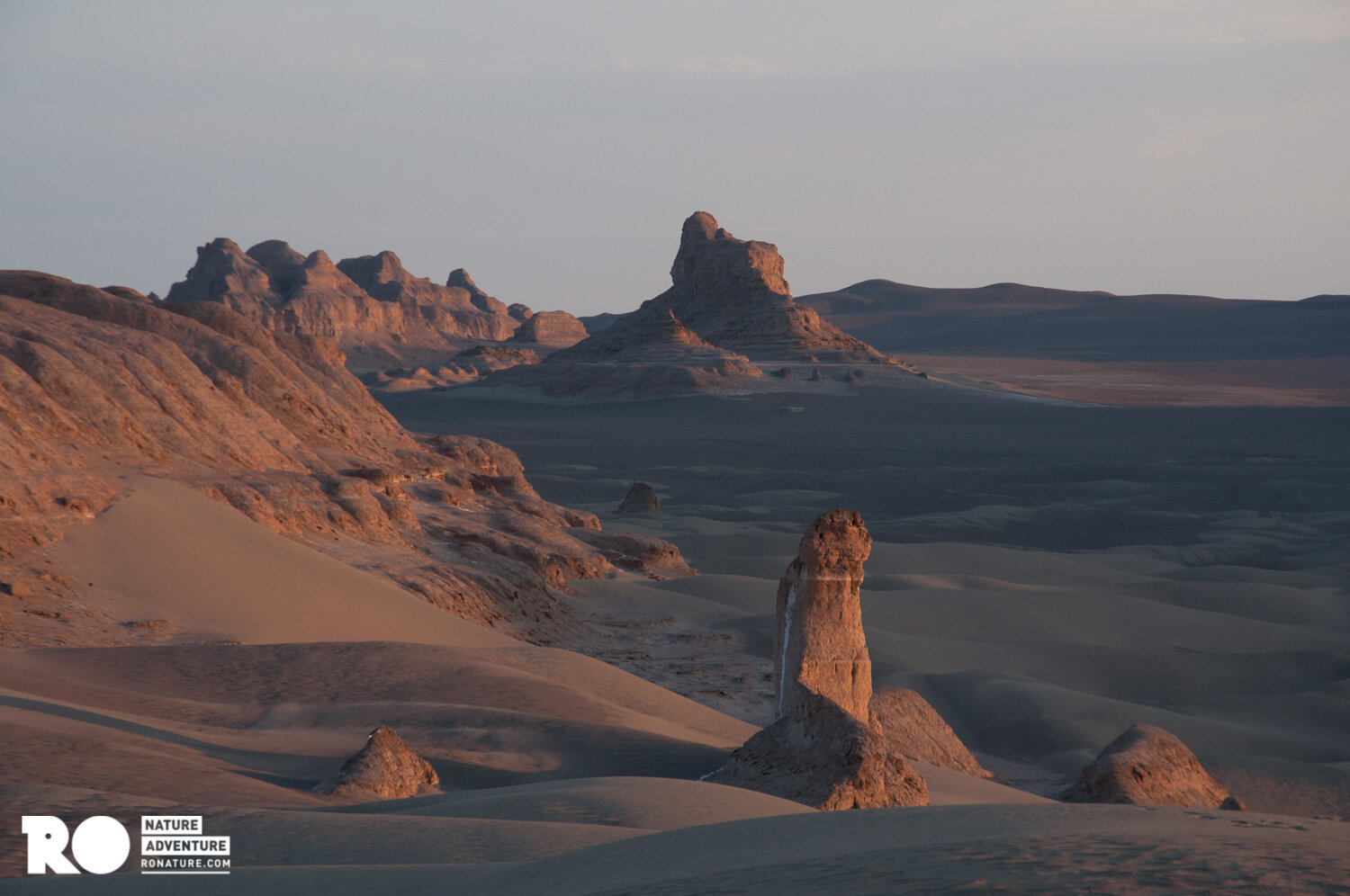
IRAN professional desert expedition
The difference between us and other desert guides is we know all the deserts of Iran but not only one of them, and this come from the years of numerous expeditions in the different deserts of Iran. We finally solved the maze of routes which connects all of Persian deserts through the most fascinating landscapes, off the beaten track. In this 3000 KM route, we will use less than 100KM asphalt.
This trip is designed for desert lovers with experience in sand and dune. As our experienced guests told us, after doing this route, no deserts can satisfy you except Gobi.
The deserts of Iran are sure to delight any desert lover. They come in every shape and color. Stone deserts, salt deserts, mountain deserts, sandy deserts. Above all sandy deserts, gigantic dune mountains. They promise adventurous new territory, are almost unknown in this country and have hardly ever been traveled by Europeans. The queen among them is Dasht-e Lut in Iran. With 166,000 km2, it is the largest desert in the country and their dunes tower up to 420 meters. It is one of the driest areas on earth. Was never inhabited, in the past it was considered impassable for caravans. To this day, even tried and tested desert drivers hardly trust the center of their dune sea.
Contrary to the fear of many, Iran is an absolutely safe travel destination with an incredibly great hospitality. On our expedition we have special permission to drive through the Iranian desert areas.
This is an expedition trip with at least medium driving requirements. The vehicles must be well equipped and specially checked and prepared before the expedition. You should be physically able to cope with the requirements of such a trip. Especially the climate, deprivation, hygienic restrictions and nervous strain can be exhausting.
We divide this trip to 3 stages. Each stage is about 1000 KM (6 to 7 days) and in between we will not see any civilization. So the cars must be able to carry fuel, water, food and the required equipment for each stage.
STAGE ONE
day 1 to 7
Dasht-e Kavir
Rig-e Jenn
Mesr
Maranjaab
STAGE Two
day 8 to 13
shotoran
rigestan
STAGE three
day 14 to 20
Lut desert
kalout
Yalan mega dunes
star dunes
STAGE ONE (day 1 to 7)
Dasht-e Kavir, Rig-e Jenn desert, Mesr desert, Maranjaab desert
Dasht Kavir
Dasht-e Kavir and the Great Salt Desert, is a large desert lying in the middle of the Iranian plateau. It is about 77,600 km² and consist of different deserts like Maranjaab, Rig-e Jenn and Mesr, which we will cross all in the first stage.
Maranjaab desert
We start our trip from Kashan and enter the central desert from the eastern side of it. We head strait to one of the biggest salt lakes of Iran in Maranjaab Desert.
Rig-e Jinn desert
Jinni’s dunes. They have always avoided caravans, because here is the realm of the Jinns, the evil spirits. The area consists of dunes and salt marshes. No wonder that it was formerly considered to be impassable. The entry into the realm of the Jinns leads through a tight wadi, then it goes into the desired dunes. Very soft, very nested, very nice.
Mesr desert
In our language we call Egypt country, “Mesr”. A few hundred years ago, a camel driver came to this side of this desert to find his lost camel. When he saw the beauty of the place, he said "I will make my own Egypt here". So he started to dig a Qanat for 5 km to bring water to this area and build a small village in the name of Mesr. The deserts around this village is also named after the village since it is the closest civilization to this desert.
This stage will finish in Khur small city, where we can refuel the tanks and do some shopping for the next stage.
STAGE TWO (day 8 to 13)
In this stage we will cross the 2 main deserts which connect the Dasht-e Kavir to Lut desert. Like the other deserts of Iran these areas was abandoned during the history. We will have some surprises in both of these deserts for you.
Shotoran desert
Shotoran means Camels. This desert is a closed dune area, bordered by mountains on one side and small salt lake on the other side. Since it have some vegetation inside the dunes, villagers around let their camels go inside this desert and eat. Of course they will come back automatically to their barn after few days. This makes them the only locals of this desert so villagers believe this desert belongs to the camels and named it after them. Driving here is demanding.
Rigestan desert
Combination of black mountains, yellow dunes, colorful hills, white salt lakes and erosive phenomena, makes it the most colorful desert of Iran. It took us many years to finish the maze of this desert trough the swamps, sand dunes and impassable canyons and mountains. We named it the desert of silence. The shapes of the dunes and the play of shadows is sensational. Also because it is next to the wild life refuge area, there is a high chance to see wild lifes like: Asiatic cheetah, Persian leopard, Caracal, wild goat, Jebeer gazelle, wild sheep, mouflon, ibex, blanford’s fox, ruppell’s fox and other desert animals.
This stage will finish in Birjand, where we refresh up and stay in a hotel to get ready for the 3rd stage, the absolute highlight in Iran.
STAGE THREE (day 14 to 20)
Dasht-e Lut
Like Dasht-e Kavir this desert contains different regions. The sand dune area named Yalan dunes (Yalan means heroes), they was impassable until few years ago which we finally cross them through different sides. The dunes pile up like mountains, high, steep, sometimes extremely soft. The level of difficulty can be adjusted according to previous knowledge. We will reach the fingers of Yalan dunes which holds the highest dunes (420 meters) of this desert. We drive across a wide plain from the Lut dunes to the star shaped dunes and Kaluts. These sandstone formations, which have been eroded over thousands of years, sometimes look like sunken castles. This spectacular area is unique in the world and it is the heaven for desert lovers.
This stage will finish in Kerman and we can help you on planning your trip afterwards. According to your time and preferences, we can manage to continue this expedition to the south of Iran for 1 more week or help you to visit 3 main cities of Iran (Isfahan, Shiraz and Yazd).
General information about the Iran deserts expedition
Duration: 20 days
Categories: Expedition
Adventure rating: 5/5
Group size: min 4, max 9
Possible Months: October to April
Best Months: November to March
Physical Demands: Guests must be able to walk for 3 hours without feeling tired
Climatic conditions
In the southern part of the Iranian deserts, the temperatures are between 5 degrees at night and 25 degrees during the day - similar to the Sahara.
Health
You should have an average state of health and be able to cope with the requirements of such a trip. Please have your family doctor “check” you in advance. The doctor you trust should also advise you on equipping your first aid kit and on vaccinations.
Social interaction
Such a journey demands a large dose of tolerance, team spirit and not least a lot of humor from all participants. If you are looking forward to the diverse encounters with other people and can also be open to your own mistakes and weaknesses of other people, you will master the travel in the team very well.
It is expressly an expedition trip with the corresponding requirements for participants and vehicle. The starting point and end point are fixed. In between, there may be adjustments to the planned route for a variety of reasons. The schedule is feasible without stress. Unforeseen events such as breakdowns or waiting times at checkpoints should be dealt with as a team. Helpfulness and joint problem solving are basic requirements for working together on a long expedition. The tolerance mentioned at the beginning is not just a catchphrase.
Vehicle and equipment
A technically flawless, well-equipped and solid off-road vehicle is a basic requirement for participation. The vehicle must be verifiably checked and prepared for this expedition trip. A vehicle-specific spare parts package is mandatory.
The tank range of the vehicle should be at least 1000 km. Drinking water and process water should be calculated for 7 days.
We will discuss our equipment and technology list with you personally.
our services:
Organization of the entire trip
Fully equipped 4x4 safari vehicle
Professional desert guide
Detailed advice on equipment, expansion and technology of the vehicle
Obtaining the necessary permits
Support vehicle
technical help
Help with all formalities
up on your request:
Visa
Flight ticket
Travel insurance
Airport transfers
All camping and cooking equipment
1 to 2 person tent with mattress
Announced meals and catering
Optional activities (Paragliding, Camel riding, Quad bike riding, Sand boarding and ...)
you should have:
Travel insurance
Sleeping bag
4x4 drivers should have:
Carnet de Passages
Fuel costs
Customs fees
Road user fees
Entry fees
